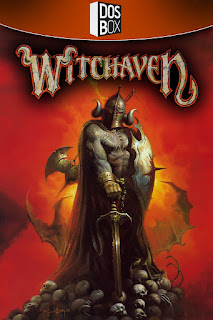Last weekend I attended AZ Game Fair 2019 in Mesa. It's just up the road from Tucson, and as a "special guest" I get a free badge, so it's usually a very inexpensive weekend of gaming. However, this year my wife and baby came with, which meant a full price hotel room for 2 nights, so it wasn't so cheap after all.
I did not arrive at the convention until 10pm on Friday, so I might as well have just come up Saturday morning and saved the cost of the room that first night... oh well.
Saturday and Sunday, however, I did manage to spend a lot of time at the convention, and actually play some games for once!
Old Favorites
Puerto RicoAfter hopping into a game or two of
The Resistance with Sean Ramirez of
The Dukes Of Dice podcast, I taught his friends Puerto Rico, which sat at the top of the "best games" list for a decade (and with good reason). Sean and I had played before, so of course it boiled down to a contest between him and me. I haven't played that game in years, but it's definitely one of my favorites, and I pulled out the victory.
Game Design PanelAfter that, I was on a game design panel with another local designer,
David Short, as well as Canadian special guest
Daryl Andrews, and the guest of honor from Italy,
Vital Lacerda. The panel was called The Secret Lives of Board Game Designers, but had no real direction or moderator, so I tried to sort of direct traffic. We mostly took questions from the audience.
Railroad TycoonAfter the panel, my friend Hoss was running a game of Railways of the World (FKA Railroad Tycoon). There were only 3 of us, Hoss, myself, and a new player Hoss had just taught how to play. We used a map of
Great Britain, which I'd not seen before. I kinda liked the map. It was a tight game, and in the last round I had to go to the bathroom, so I made my last 3 plays out of turn (they didn't affect anybody else anyway) and ran off. When I got back, they'd just finished counting points, and Hoss had won by 1 point! I don't know if I trust him though, the first thing he said that game was that I should be banker because he was bad at counting, and the first thing he did in the game was grab $10k bills in lieu of $1k bills... :)
New Hotness
Underwater CitiesIn addition to those old favorites, I got a chance to try a few of the new, hot games. Saturday night Hoss and I sat down to figure out Underwater Cities. The rulebook took about 45 mins to learn from, mostly because they repeated the "play a card and place a worker, and if your card color matches, you get the bonus" text at least 4 times.
I was enjoying Underwater Cities while we played, but thinking about it afterwards, I am not sure I'd want to play it more than maybe twice. The "play a card and place a worker, and if your card color matches, you get the bonus" thing is cute. I did feel like I never really wanted to play an off-colored card, even though I had something in play that gave me a consolation prize when I did that (though I probably should have done it once or twice).
We had to stop 1 turn before the end because they closed up, so I don't actually know how my strategy turned out, but I got a pretty good feel for it. I saw maybe 2 real paths I'd want to try (the one I did, and 1 other). I'm sure there's more, but it wasn't obvious what else you could really do.
The collect-cards-in-play part was a lot like
Terraforming Mars, and I definitely liked this A LOT more than I like Terraforming Mars.
WingspanWingspan was solid. I enjoyed most of it. Probably the only thing that I thought was weird was the random-and-variable resource pool. You need resources (in 5 types) to pay for playing bird cards, and there's an action where you take some resources (you can upgrade that so you take multiples, 1 at a time). The resource pool is 5 dice, rolled into a supply. When you take a resource, you remove the die from the supply, reducing what's available. Caveat, if all remaining dice in the supply match (there's only 1 resource option available to you), then you may choose to re-roll all of the dice, resetting the whole pool to 5 random things before taking one.
I could see wanting a random resource pool, and I could see wanting a competitive resource pool (like dice drafting), but I'm not sure the way they're combined here is the best way to do the job.
One of the types of reasons I don't like it is because there are a bunch of card effects that are like "take a [specific resource] from the supply, if it's there" - which is therefore super variable, based not just on what's rolled, but also based on how many dice happen to remain in the supply. Worse, there's a card type that says "when [X happens and succeeds], take a die from the supply," where the likelihood of X happening depends on what opponents do (which is fine), but the likelihood of X
succeeding increases as the number of dice remaining decreases... so while it looks like this card gives you flexibility when it hits (you choose a die rather than get a specific resource), in reality, this card is not likely to hit at all, and if it does, you probably get some random resource, not a real choice. I could argue that's just a lame card effect, but I think it's a symptom of a lame resource system.
But other than that, I thought the game was fun, and solid.
Just OneNot as hyped as the previous two games I mentioned, Just One is a hot new cooperative party game where the goal is to get one of your teammates to guess a word by giving 1-word clues. The catch is that after each player writes down their 1-word clue (but before the guesser sees then), any matching clues cancel out. So it's scary to use the obvious clues, because if someone else does that, you don't get them, but then everybody avoids the obvious clues, and you still don't use them!
It's a fun party game, would play again, even at 2 in the morning :)
My Own Games and Prototypes
Crusaders: Thy Will Be DoneCrusaders came out just a few months ago, and so far it seems to be very well received. The production is very nice, and several people approached me at the convention to tell me how much they were enjoying the game play!
One guy who had backed the Deluxified version of the game was trying to read the rules while his friends played another game, so I offered to teach. In the end it was just 2 of them (the other 2 kept playing that other game), so I sat in and made it a 3 player game.
It's been a while since I've played Crusaders, but I still liked it a lot!
Crusaders: Divine InfluenceI had made an expansion to Crusaders about a year ago, and I had thought it was probably done. I sent it to Utah with Michael in October so the TMG team could play it, and I just got it back about a week ago.
Ben and his daughter were looking to play one of my prototypes, and so as the last game of the convention, I taught them Divine Influence. Emma had not played Crusaders before, but she picked the game up just fine, even with the extra expansion rules. It went well, though I think the free movement from the Influence action is too fiddly, hard to visualize, easy to forget, and usually unnecessary. I should either cut it, or make it simpler -- maybe something like "you may freely move between adjacent hexes with your influence marker on them" (a dynamic known as "railroading" in some games). Maybe better would be to simply cut it, and save having to make components for influence.
David's doggo card gameLate Saturday night I played one of David's quick card game prototypes. It's intended to be a sort of follow up to AEG's
Cat Lady. Indeed, much of it was super similar to Cat Lady (collecting similar types of sets from a 3x3 grid), however this game was a step up in complexity, as you could buy upgrades to the patterns of cards you're allowed to pick up.
I gave him some feedback, hopefully it was helpful. Mostly it was "once a player replenishes the board, their turn should be over," which I think he agreed with in the end. The rest was about a special card called "fetch," which did something thematic that David liked, but I thought should probably instead just be "get a card from the discard pile," which also seemed thematic to me. The way David wanted to do it, in my mind, subverted the main mechanism in the game, which is something I don't like doing. The recent game
Noria does that, and I wish it didn't.


























































































